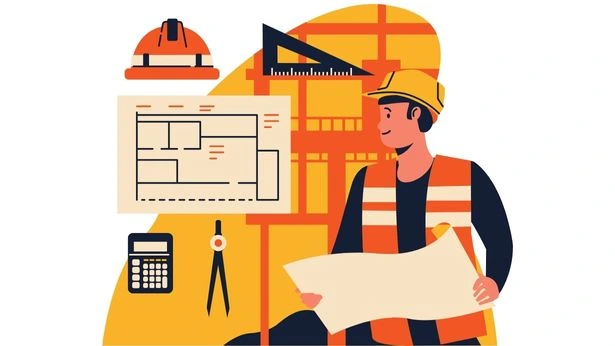What Does an IT Infrastructure Engineer Do? Roles & Career Guide
If you’re interested in knowing the IT infrastructure engineer job responsibilities, this article will provide you with an understanding of the role and its responsibilities, tools used, career path, and some basic questions on how to become one. IT infra engineers are the backbone of any IT organization; they keep computer systems, networks, and servers working.
Who is an IT Infrastructure Engineer?
An IT infrastructure engineer is a person whose job is to design, implement, and maintain IT systems for an organization. They ensure that networks, servers, and software are working properly, securely, and reliably. IT infrastructure engineers are not in the spotlight as they work behind the scenes to avoid system failures and to keep technology running reliably.
What Are The IT Infrastructure Engineer Job Responsibilities?

Key tasks an IT infrastructure engineer would be responsible for are:
- Design, management of servers, storage systems, and networks.
- Performance monitoring, identification, and resolution of issues.
- Cybersecurity and backup solutions for data.
- Collaboration with IT teams to deploy applications and/or upgrades.
- Hardware and software infrastructure maintenance
Essentially, they ensure that the IT context meets the demands of the organization without interruption.
What Tools and Technologies Do Infrastructure Engineers Use?
Infrastructure engineers depend on many tools and technologies that they can use to build, maintain, and protect IT systems effectively. They can use tools to monitor performance, automate tasks and processes, ensure that every system is operational, and take action if there is an issue.
- Tools for Network Monitoring: Engineers utilize network monitoring tools such as Wireshark, Nagios, and SolarWinds to keep tabs on all traffic traversing the network, identify bottlenecks, and investigate any suspicious activity. All of these tools assist engineers with contention and strive for a stable and secure connection to the network for all devices.
- Tools for Server Management: Infrastructure engineers use server management software to manage and configure Servers. There are several vendors who offer server management tools, which provide tools and capabilities to deploy virtual machines, manage workloads, and optimize performance. Some of these vendors include Microsoft – Windows Server, Linux, and Cloud VMware.
- Tools for Cloud Platform Management: A significant amount of the IT infrastructure today runs on the cloud, either in whole or in part. Infrastructure engineers access the platforms of Amazon Web Services (AWS), Microsoft Azure, and Google Cloud Platform (GCP) in order to deploy, scale, and manage cloud-based systems/applications.
- Tools for Backup and Recovery: Backup/recovery engineering tools are implemented to serve as a backup to ensure the safety of data. Technologies like Veeam, Acronis, and Commvault offer effective commercial solutions for IT backup solutions and are widely considered to provide protection to data by providing secure backups and disaster recovery during system failures and/or cyber-attacks.
- Tools for Security: Security is also the number one priority for every infrastructure engineer. Tools for firewalls, antivirus, VPN, and intrusion detection (IDS) are just a few of the security tools to keep unauthorized access to a minimum.
Infrastructure Engineer vs System Administrator Role Differences
Numerous individuals mistake infrastructure engineers for system administrators, but both functionally employ different roles.
- Infrastructure Engineer: An engineer who’s focused primarily on identifying, planning, designing, and improving IT infrastructure. They are setting and strategizing long-term solutions.
- System Administrators: support and maintain daily operations of systems and networks in every area. Their workforce is operational and reactive in nature.
Knowing the differences between the two roles will provide organizations with a chance to understand what tasks are to be assigned to them or improve IT operational efficiencies.
How to Become an IT Infrastructure Engineer in the US
To pursue a career as an IT infrastructure engineer in the US, you need to have the appropriate education, skills, and experience:
- Education: All you need is a bachelor’s degree in Computer Science, Information Technology, or a related field.
- Certifications: You should obtain CompTIA Network+, Cisco CCNA, or some Microsoft Azure certifications.
- Experience: It is recommended that you start in roles such as IT support or a system administrator.
- Skills: There are a few vital skills you should have: Networking, cloud computing, cybersecurity skills, in addition to problem-solving.
- Job Search: Search and apply for any infrastructure engineer openings at tech companies or firms that specialize in IT.
If you follow these basic steps, you should have a good opportunity to thrive in the area of IT infrastructure.
Also Read: Top 8 In-Demand Soft Skills for Your Career
Salary and Career Growth for Infrastructure Engineers in the US
The job outlook for infrastructure engineers in the United States is favorable. An entry-level engineer will make approximately $70,000 yearly, while an experienced engineer may earn $120,000 or more.
Professional Development:
- Junior Infrastructure Engineer → Senior Infrastructure Engineer → IT Manager → IT Director.
- Important Skills: Cloud Computing, Virtualization, Cybersecurity, Automation.
- Investing in certifications and skills with tools will add value to help you earn a higher salary and career opportunities.
Final Thought
It’s crucial to the functioning of businesses for infrastructure engineers to keep systems running effectively. They handle everything from networks and servers to data security to maintain good IT hygiene. Knowing more about these engineers, their responsibilities, tools, and career possibilities can set the aspiring professional up for success in building an excellent career.
If you’re interested in starting your career as an IT infrastructure engineer in the USA, focus on gaining the right certifications, hands-on experience, and staying updated with the latest tools and technologies. To find the best job opportunities, connect with a trusted IT infrastructure recruitment agency that specializes in matching skilled professionals with top companies.
For expert guidance and placement support, contact Time Agency Group today to take the next step in your IT career.
FQAs on What Does an IT Infrastructure Engineer Do
Q1. What is the role of an IT infrastructure engineer?
An IT infrastructure engineer designs, implements, and maintains IT systems, servers, and networks for IT operations.
Q2. What tools are used by infrastructure engineers?
Infrastructure engineers use cloud, backup, server operating, and monitoring tools, and security tools.
Q3. What is the difference between an infrastructure engineer and a systems administrator?
Infrastructure engineers design IT systems and plan the systems, whereas systems administrators are responsible for day-to-day operations and support.
Q4. How can I become an IT infrastructure engineer in the US?
To become an IT infrastructure engineer, you should get a degree in IT, get certifications, get experience, and develop the technical skills you need.
Q5. What is the average salary of infrastructure engineers in the US?
An entry-level infrastructure engineer earns around $70,000, while an experienced engineer earns more than $120,000.
Q6. Do infrastructure engineers manage cloud systems?
Yes, infrastructure engineers often manage AWS, Google Cloud, or Azure cloud as part of their infrastructure management process.
Q7. What are some skills space are necessary for IT infrastructure engineers?
Networking, cloud computing, cybersecurity, analytical and problem-solving skills, and skills in system administration.
Q8. Is there a career ladder for this field?
Yes, an IT infrastructure engineer can move up from a junior engineer role to a senior engineer role, then to an IT manager role, and then to an IT director role.
Related Article: How to Setup IT Infrastructure for Small Business






